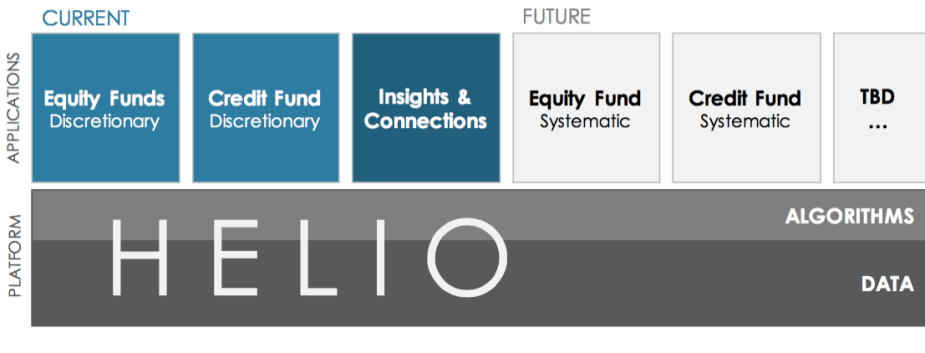“To fly what others only imagine.”
Woah. This is the vision statement of NASA’s Armstrong Flight Research Center and it’s pretty awesome. It informs and inspires at the same time and I think it serves as a great example of what an effective vision can be. NASA hit the nail on the head, but it’s not that easy for everyone, especially when not all of us get to build rockets for a living.
Every year our largest investor, Union Square Ventures, holds an unconference– an informal gathering of the 60 founders in their portfolio. Last year, one session I attended was more crowded than any session I had ever been to. The topic was “How do I talk about vision to my team?” This is a question that I have thought a lot about here at CircleUp and it was somewhat of a relief to discover that I was not the only one grappling with it.
Vision can be hard to talk about, but it’s important to understand. When team members believe in the vision of a company, they are much more likely to tie their individual values to that shared vision. This allows them to have a greater sense of ownership and contribution and motivates them to offer new ideas and new ways to help. I’ve found that when employees ask about vision it typically falls into one of three buckets: (1) Functional: they really just want to know how important their role is. (2) Social: they need a better way to talk about the future of the company externally. (3) Emotional: they want to feel part of something bigger and have comfort that their work is contributing to an endeavour that will succeed. No matter what the reason, it’s the role of the CEO to deliver and to invite people in to help write the roadmap. I want to share a bit about the way I think about vision and how to best communicate it.
Vision Is Different Than Mission
Figuring out the distinction between vision and mission can be tricky for many founders- I know it was for me. I found this short description to be a good place to start. I think the best way of drawing the distinction is that a mission describes what your business does today, while a vision describes what you hope to accomplish by executing on that mission. To return to the NASA example for a second, the Armstrong Center’s mission is “Advancing technology and science through flight.” Now, that may not be quite as awesome as a sentence about flying what others can only dream about, but it does gives you a good sense of what NASA does on a daily basis to build towards their vision. The vision inspires.
At CircleUp, our mission has and will always be the same: to help entrepreneurs thrive by giving them the capital and resources they need. That’s what we do today and will do every day. Our vision is to create a transparent and efficient market that drives innovation forward for all. That is, by executing on our mission of getting great consumer businesses capital and resources, we hope to open doors to innovation. You can read more about the specifics of our vision here.
Some people have asked me why we need both a vision and a mission, and I think it’s a fair question. Do a quick Google search of your favorite companies and you’ll find that most have either a vision or mission statement but not both. There’s an argument that having both can complicate your external messaging, but I think the much bigger risk is to have employees that don’t have a common sense of what they’re working on and what they’re working towards, and a public that sees only what you do but not why you’re doing it. To capture both in a single statement usually requires length, and if it’s long, it probably won’t be remembered. To be candid, for CircleUp I think both are needed because what we do is also fairly complicated. I often wish that weren’t the case, but it is. Mission gets people passionate. Vision aligns everyone in the same direction.
Vision Can Be Communicated in Different Ways
Part of this post is to recognize that our company can do more to communicate vision. I would bet you that everyone at CircleUp knows our company’s mission. In fact, I’ve been known to quiz new hires on the mission – whether at a company offsite or during a company-wide presentation. The vision, I think, is emphasized a bit less. Although all of us have a sense of why we come into work every day, I think we can do a better job of rallying around that reason. There are a few places where we can make this happen.
1) Interviews. Even before a person joins CircleUp, I want them to thoroughly understand both our mission and our vision, and I think interviews can be a great place to make this happen. We send the vision blog linked above to candidates before they interview, and oftentimes during interviews I’ll draw a version of the below diagram on the whiteboard and give candidates a chance to digest it and ask questions in real time.

2) New hire training. Once they join the company, new employees may already know about our vision, but I want them to understand the why behind it. Not everyone at CircleUp has to be passionate about consumer and retail companies (although it’s always nice when they are), but they do have to be passionate about opening doors to innovation for great companies. At CircleUp we do this through a repeating session called “the founder’s story” that every new employee attends. Either I or my cofounder Rory lead the session each time.
3) Company meetings. If we aren’t constantly tying things back to our vision, it will get stale and feel like empty text. It’s important to relate new group projects or initiatives back to the broader vision and do it a lot. Every two months we have a company-wide meeting that ties back to vision. That is a relatively new tradition (i.e. 6 months old). Before instituting that two month cadence I found that the complaints about our “lack of vision” would increase meaningfully if too much time had passed since our last vision conversation. Repetition helps.

While I think the vision of a company should be constantly communicated by the CEO, he or she should not be the only one communicating that vision. When other team members are able to effectively speak about the vision of a company, they can reach audiences that the CEO may not be able to in ways the CEO can’t. Have a team lead talk about how her team’s work feeds up into the overall vision. If someone is presenting a project have him talk about what that project is doing to further the vision. When a board member comes and talks to the company, prep them ahead of time to focus on vision. This can have very powerful and positive effects on company culture.
Final Thoughts
Companies today are in a constant state of flux as they respond to changes in the world around them, innovate, and grow. Change can be a very powerful and positive thing, but leaders need to make sure that even amidst a sea of change employees feel like they are rowing in the same direction towards the same vision. Legendary New York Yankees baseball player Yogi Berra summed up this idea best when he said, “If you don’t know where you’re going, you’ll end up somewhere else.” Know where you’re going.
